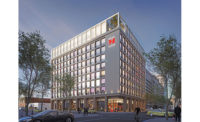The utility thoroughly vetted five candidates before narrowing the field to two. "Being a public agency, we subjected them to very vigorous reviews, from financial health to expertise to past performance," says Trent.
The selected builder, Greenwood Village, Colo.-based Quanta Power Generation Inc., "wasn't the low bidder, but the best bidder—the one we felt could best stay the course for the duration of the project," says Trent.
"Anchorage is a fair-size city, but it's also a remote one," says Darryl Jenkins, Quanta's project executive. "There were concerns about transportation and logistics, given that all significant components would arrive by boat or barge. There were also concerns about our ability to contend with the climate—extreme cold with only five to six hours of daylight during winter months."
Quanta, for its part, selected designer Stantec, Scarborough, Maine, to engineer the project because of its experience and ability to manage substantial workloads.
"We were pouring concrete as we proceeded with engineering," says Ori, "so everyone from Stantec to Quanta to our group needed to be on the ball."
"Due to the aggressive nature of the project—30 months from procurement through completion—engineering was only 30% complete by the time we broke ground," says Jenkins. "We're still in design, though we're in excess of 90% complete. It's been true design-build as you go."
Rather than perform work sequentially, a critical-path schedule called for several activities, including concrete pours and installation of below-grade conduit, to overlap in order to meet major milestones, notably completion of a 60,000-sq-ft administration and main power block building—home to gas turbines, steam turbine and boilers—as well as a pair of cold and warm storage buildings, a pump house, cooling tower and switchgear building.
Foundation pours were sequenced from largest to smallest, beginning with the administration and main power block building, for which construction extended through winter, requiring construction of temporary heated enclosures for periodic warm-ups. As the structure rose, crews installed tarp over open roof apertures and equipped the interior with space heaters.
As work drives toward completing five remaining enclosures, crews continue to negotiate tight site constraints and complex logistics for activities ranging from equipment and materials deliveries to the arrival, placement and deployment of construction equipment, cranes included.
"It's been like a choreographed ballet," says Trent, "and we meet three times a week to manage it all."






Post a comment to this article
Report Abusive Comment